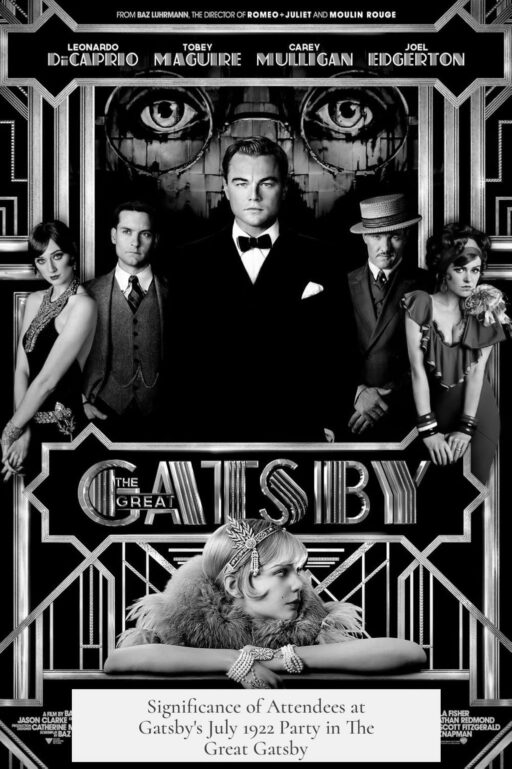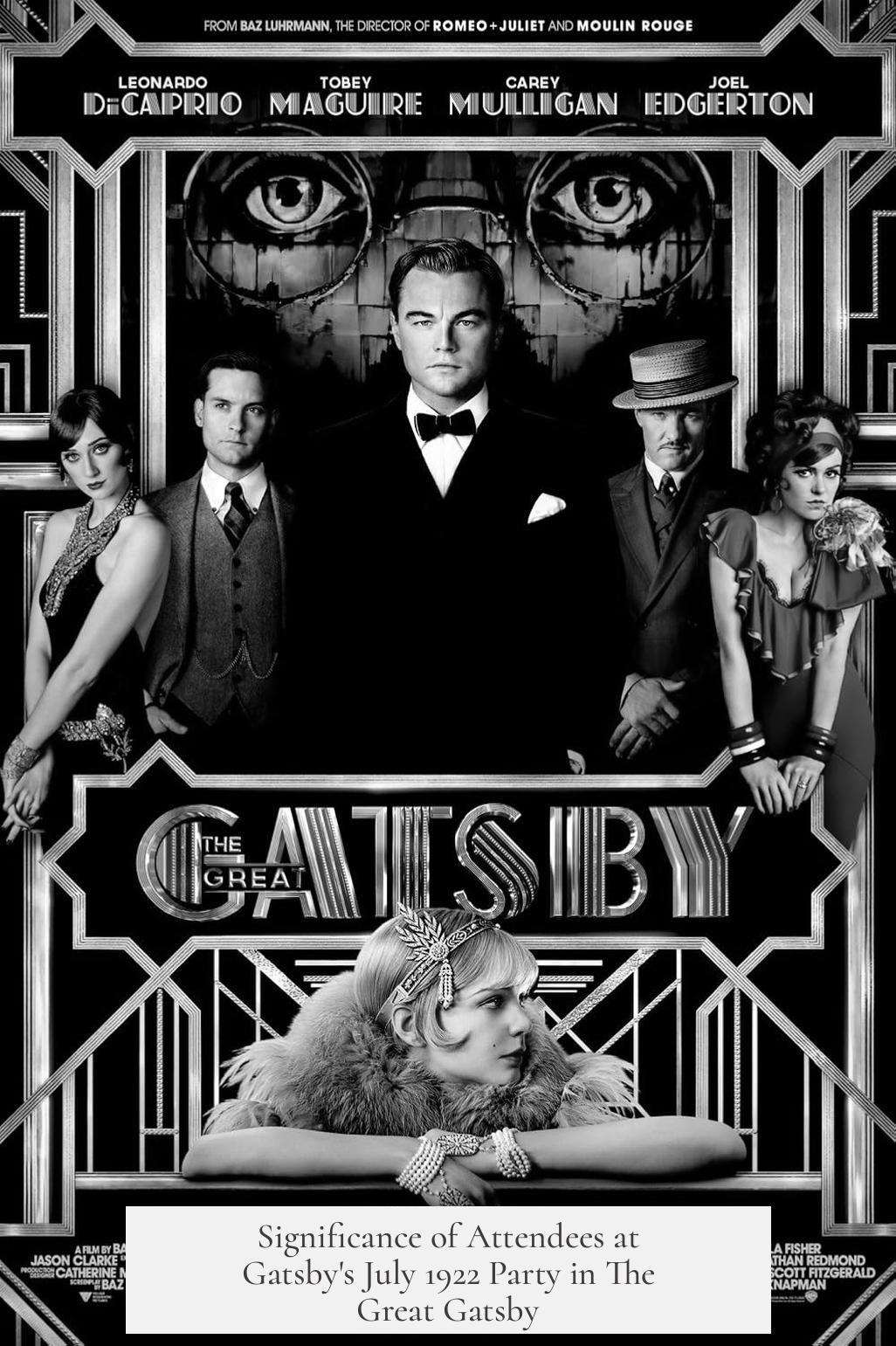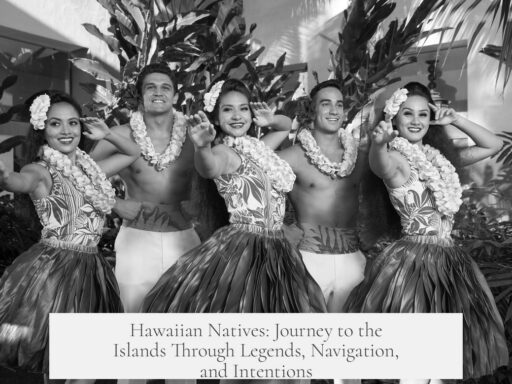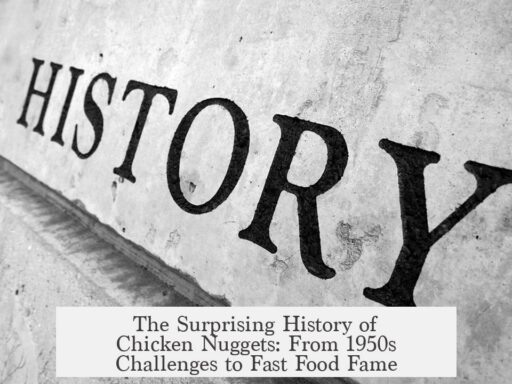In Chapter 4 of The Great Gatsby, Nick’s list of attendees at Gatsby’s party includes names that carry significant cultural and symbolic meaning rather than representing actual prominent individuals of Fitzgerald’s day.
The names serve multiple purposes, blending satirical, symbolic, and social commentary elements. None of the names directly correspond to real people in the 1920s, as verified through records like the New York Red Book, which showed no notable real-life figures matching names such as “Gulick.” This fictionalized approach allows Fitzgerald to craft an atmosphere of ambiguous social status and commentary on the Jazz Age’s artificiality.
Many of the names echo well-known companies, brands, or cultural symbols, creating indirect allusions to the era’s consumer culture. For example, “Cecil Roebuck” likely references Sears Roebuck and Co., a leading American retailer known widely in the early 20th century. “Dewar” clearly connects to a popular Scotch whisky brand, symbolizing the luxury and indulgence present at Gatsby’s parties. The name “Baedecker” is tied to a German publishing house famous for travel guides, subtly reinforcing themes of mobility and social aspiration.
Other names hint at ethnic and cultural identities, with some bearing Irish or Jewish origins instead of the traditional English, Dutch, or German Protestant backgrounds favored by old money families. Fitzgerald’s intent here is less clear, but the choice may reflect social dynamics, diversity, or the demographic shifts of the time. However, scholars remain cautious about attributing concrete meaning to these ethnic hints.
Fitzgerald employs satirical and symbolic nomenclature as a hallmark of his style. For instance, Daisy Fay’s name symbolizes a delicate flower and a fairy-like fantasy, sharply contrasting with more robust or coarse names like Myrtle’s. In the party list, names like “Ripley Snells” evoke comic or grotesque images—”Ripely Smells” implies moral corruption under the glamorous surface. Other playful names such as “Smirkes” and “Haag” suggest slyness or cynicism.
Floral and piscine imagery appears throughout the list as a thematic device. Characters named “Orchid” and “Lilly” reinforce a motif of decorative transience and fragility. Piscine terms like “Beluga,” which recalls luxurious caviar, point to decadence. “Hammerheads” conjures a shark-like predatory nature, fitting for the ruthless entrepreneurial spirit of the 1920s elite. The name “Chromes” evokes the shiny, fast, industrial modernity symbolized by automobiles, omnipresent in Fitzgerald’s narrative.
A notable historical reference is “Stonewall Jackson,” named after the Confederate general, suggesting a figure of old Southern aristocracy. This juxtaposes sharply with Gatsby’s nouveau riche status and highlights the lingering class and cultural tensions of the period. It illustrates the divide between inherited wealth and newly acquired fortunes that pervade the novel.
The extensive length of the guest list underlines the massive social attraction of Gatsby’s parties. It reflects the broad mix of characters from diverse backgrounds and statuses, symbolizing the chaotic, ostentatious atmosphere of the Jazz Age. Instead of realistic portrayals, Fitzgerald uses these invented names to comment on the frivolity, carelessness, and moral ambiguity of the time.
- None of the listed names match actual prominent people in 1922.
- Names often reference brands or cultural symbols (e.g., Sears Roebuck, Dewar Scotch).
- Ethnic origins in names suggest diversity but remain ambiguous in meaning.
- Many names create satirical or symbolic effects reflecting corruption, fragility, or predation.
- Historical and natural imagery reinforces social tensions and themes of fleeting wealth.
- The list highlights the eclectic, decadent society of Gatsby’s parties and the Jazz Age.
1. Were the names listed by Nick in Gatsby’s party significant to people in Fitzgerald’s time?
Many names suggest ties to well-known brands or companies of the early 20th century, like “Cecil Roebuck” hinting at Sears Roebuck and “Dewar” referencing a Scotch brand. These allusions would be recognized by Fitzgerald’s contemporary readers.
2. Did Fitzgerald use these names for symbolic or satirical purposes?
Yes, Fitzgerald chose names with symbolic and comic meanings. For example, “Ripley Snells” sounds like “Ripely Smells,” hinting at scandal, while “Leeches” suggests parasitic behavior. This aligns with Fitzgerald’s style of using names to deepen themes or add satire.
3. Are the party guest names actual people from the 1920s?
No, none of the names are proven to belong to real individuals. Research shows no exact matches in official records, such as state senate lists. The names are fictional but crafted with cultural references and symbolic weight.
4. Do the names reflect particular ethnic backgrounds?
Some names clearly imply Irish or Jewish origins rather than Protestant Northern European ones. Fitzgerald may have intended this, although his exact purpose remains uncertain. It adds social texture to the crowd Gatsby attracts.
5. What overall effect do these names have in the story?
The extensive list highlights the large, eclectic, and often superficial social mix at Gatsby’s parties. The names contribute to illustrating the Jazz Age’s mix of wealth, pretension, and moral ambiguity through satire and symbolism.



